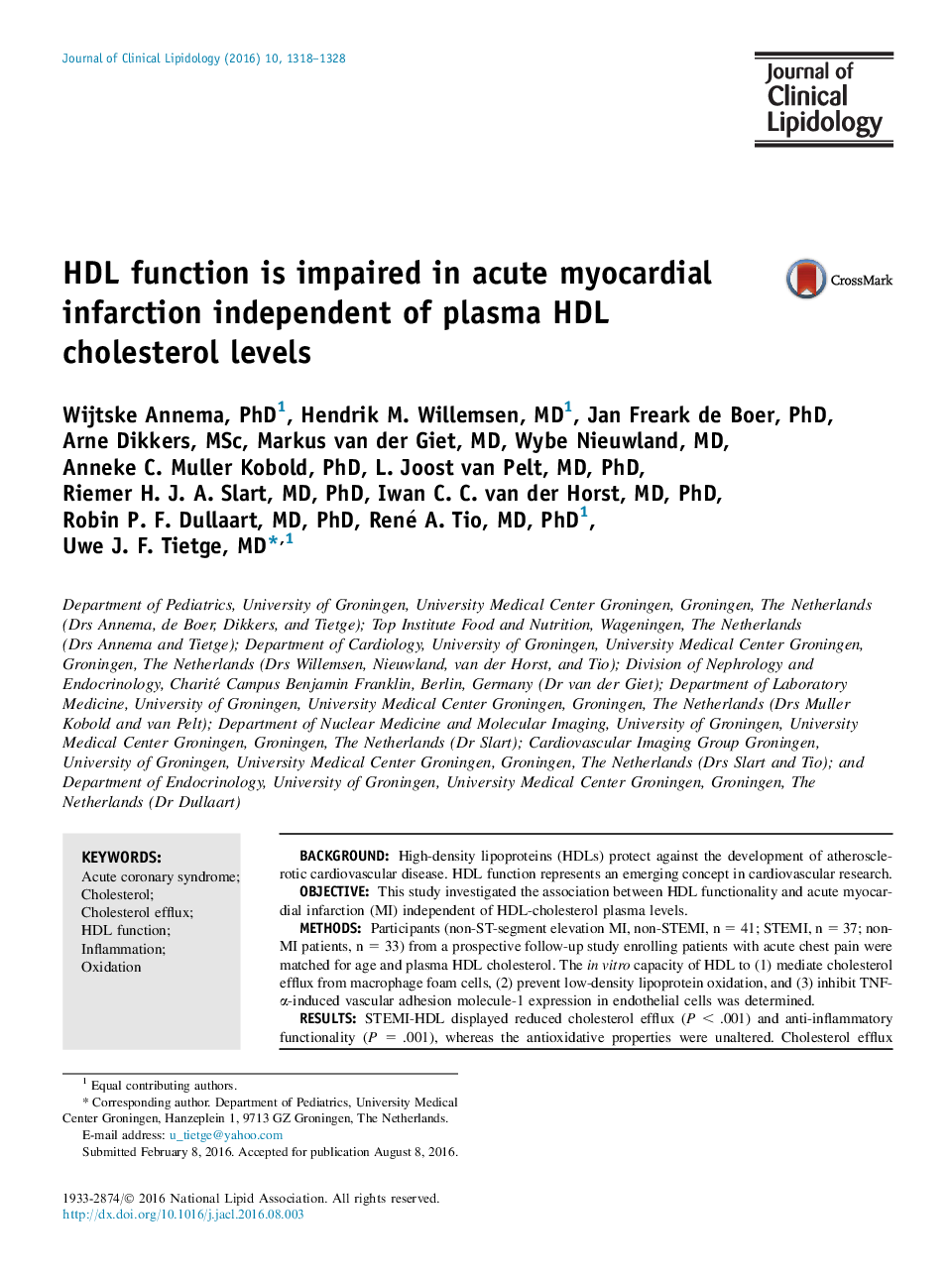| Article ID | Journal | Published Year | Pages | File Type |
|---|---|---|---|---|
| 5985109 | Journal of Clinical Lipidology | 2016 | 11 Pages |
â¢Functional read-outs of HDL represent an emerging topic.â¢We tested 3 different atheroprotective properties of HDL in patients with acute MI.â¢Efflux and anti-inflammatory function decreased in MI independent of HDL-C.â¢Antioxidative properties of HDL were unaltered.â¢Myeloperoxidase might be a major factor mediating impaired HDL function in MI.
BackgroundHigh-density lipoproteins (HDLs) protect against the development of atherosclerotic cardiovascular disease. HDL function represents an emerging concept in cardiovascular research.ObjectiveThis study investigated the association between HDL functionality and acute myocardial infarction (MI) independent of HDL-cholesterol plasma levels.MethodsParticipants (non-ST-segment elevation MI, non-STEMI, n = 41; STEMI, n = 37; non-MI patients, n = 33) from a prospective follow-up study enrolling patients with acute chest pain were matched for age and plasma HDL cholesterol. The in vitro capacity of HDL to (1) mediate cholesterol efflux from macrophage foam cells, (2) prevent low-density lipoprotein oxidation, and (3) inhibit TNF-α-induced vascular adhesion molecule-1 expression in endothelial cells was determined.ResultsSTEMI-HDL displayed reduced cholesterol efflux (P < .001) and anti-inflammatory functionality (P = .001), whereas the antioxidative properties were unaltered. Cholesterol efflux correlated with the anti-inflammatory HDL activity (P < .001). Not C-reactive protein levels, a marker of systemic inflammation, but specifically plasma myeloperoxidase levels were independently associated with impaired HDL function (efflux: P = .022; anti-inflammation: P < .001). Subjects in the higher risk quartile of efflux (odds ratio [OR], 5.66; 95% confidence interval [CI], 1.26-25.00; P = .024) as well as anti-inflammatory functionality of HDL (OR, 5.53; 95% CI, 1.83-16.73; P = .002) had a higher OR for MI vs those in the three lower risk quartiles combined.ConclusionIndependent of plasma HDL cholesterol levels, 2 of 3 antiatherogenic HDL functionalities tested were significantly impaired in STEMI patients, namely cholesterol efflux and anti-inflammatory properties. Increased myeloperoxidase levels might represent a major contributing mechanism for decreased HDL functionality in MI patients.
